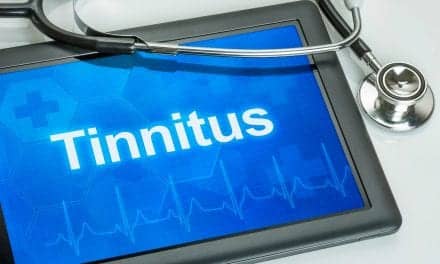
|
Tinnitus Treatment Alternatives
I am writing to offer a suggestion to address the problem of tinnitus in our servicemen. I am ENT board certified (my CV is at www.ent-consult.com). I wrote the original article on biofeedback for tinnitus in 1976 and I have an interest in this field.
Originally, I have used electromyography biofeedback. By reducing muscle tension, you can lower the anxiety-reinforcement level of tinnitus. When muscles are relaxed, you don’t have anxiety. You don’t actually cure the condition though; you reduce the factors that increase symptoms. I believe if you reduce the anxiety reinforcement aspect of tinnitus early, the buildup of further reinforcement can be prevented. The method I use involves a mirror as a biofeedback device, plus measured breathing.
Brief directions: Use a mirror. See the patient’s forehead, face, jaw, and shoulders. Have them breathe in count of four and out count of six. Make the exhalation longer that the inhalation. The exact timing is not important as long as the exhalation is longer. Inhalation is a muscle contraction—the shoulders rise, the diaphragm contracts, and so on. Exhalation is a relaxation of the diaphragm, shoulders, and chest muscles. By making exhalation longer, you are in a muscle relaxation mode longer. As the patient exhales, signal them to relax: forehead, face, jaw, shoulders. Look in the mirror. See the forehead, face, and jaw relax. The jaw should open because the muscles are relaxed. See your shoulders relax as you exhale. The mirror tells you if you are doing it right.
I believe this method can be taught immediately when tinnitus starts. All that’s needed is a mirror. Part of the therapy is to give the patient a protocol that can be followed to take an active step in the treatment.
I have also found guided visualization of value and can send you the CD I use in my Tinnitus Kit (at www.earaid.info). It is very simple for an audiologist to make a CD or iPod recording of the tinnitus sound by doing tinnitus matching. Then the patient can use the sound as a masker or for nerve enhancement. Here the user puts the sound into the normal ear, reduces the tinnitus sound, and tries to match the reduced volume from the affected ear.
I would be happy to discuss this with you at greater length. I feel that audiologists are best to administer tinnitus therapy and my online article at Advance for Audiologists deals with how audiologists can help tinnitus patients.
I also feel the studies being done on n-acetylcysteine will be of benefit. I have used this for the past 5 years in EarAid and I feel this has helped. However, my direction is to treat the brain as well as the nerve and the ear in terms of providing important nutrients and enzymes that have auditory function.
The above is quite brief. I treat my tinnitus patients with mirror biofeedback. I rarely if ever need to resort to Xanax. My point is that the audiologist can recommend this mirror biofeedback method the very first visit and it can reduce the increased anxiety reinforcement.
Murray Grossan, MD
Los Angeles

|
Top-notch Job!
Thanks greatly to Alan Ruskin for his well-written article (“Armed Forces Battle Invisible Disability,” May/June Hearing Products Report). Very informative and accurate. He did a good job putting all this information together and I appreciate his time and effort on this article. Your resources were very well chosen—good job!
Marc Stevens
Military Audiologist
LTC, US Army (ret)
Columbia, SC

|
Movie Magic
I have rarely been touched by reality television as I was with the HBO documentary Hear and Now. No one was killed, no one was humiliated, and the viewer wasn’t lied to with creative editing. It is one of the sweetest, real life love stories that I have ever seen. The spice was two real people reacting naturally to this miracle cochlear implant that a hearing person just assumes will make the Taylors have a normal sensory life. With all new technology comes frustration and my hat is off to them for trying. They were normal in an extraordinary way to begin with, and I thank them for sharing their story.
My hat is off to filmmaker Irene Taylor Brodsky for putting this beautiful film together and letting us meet her lovely parents! She is indeed a lucky lady.
Marion Monts,
Mendon, Mass

|
Thank You for Your Support
I wanted to thank you for dedicating your editor’s message in the May/June Hearing Products Report to your support and advocacy of the Hearing Aid Tax Credit Bill.
The Better Hearing Institute has made the promotion and (ultimately) the passing of this legislation our first priority, which was the genesis behind the user-friendly Web site (at www.hearingaidtaxcredit.org). Frankly, we know that if we cannot energize and mobilize our own industry members behind this initiative, we do not stand a chance with the general public.
With the help of people like you, we have a fighting chance to gain the support we need in Washington for this critical piece of legislation.
Brian Kinnerk
President, Unitron Hearing US;
President, Better Hearing Institute
Plymouth, Minn





